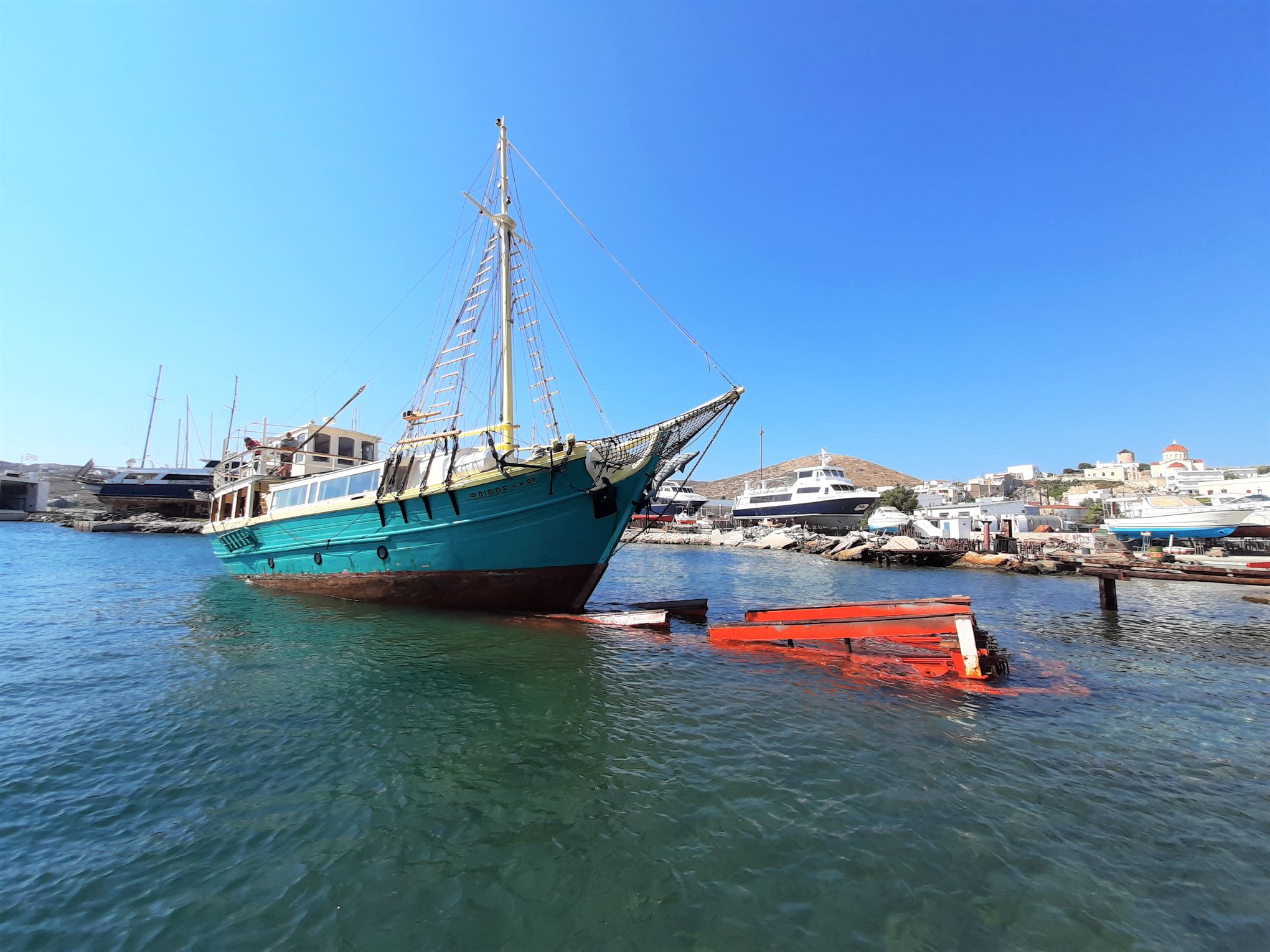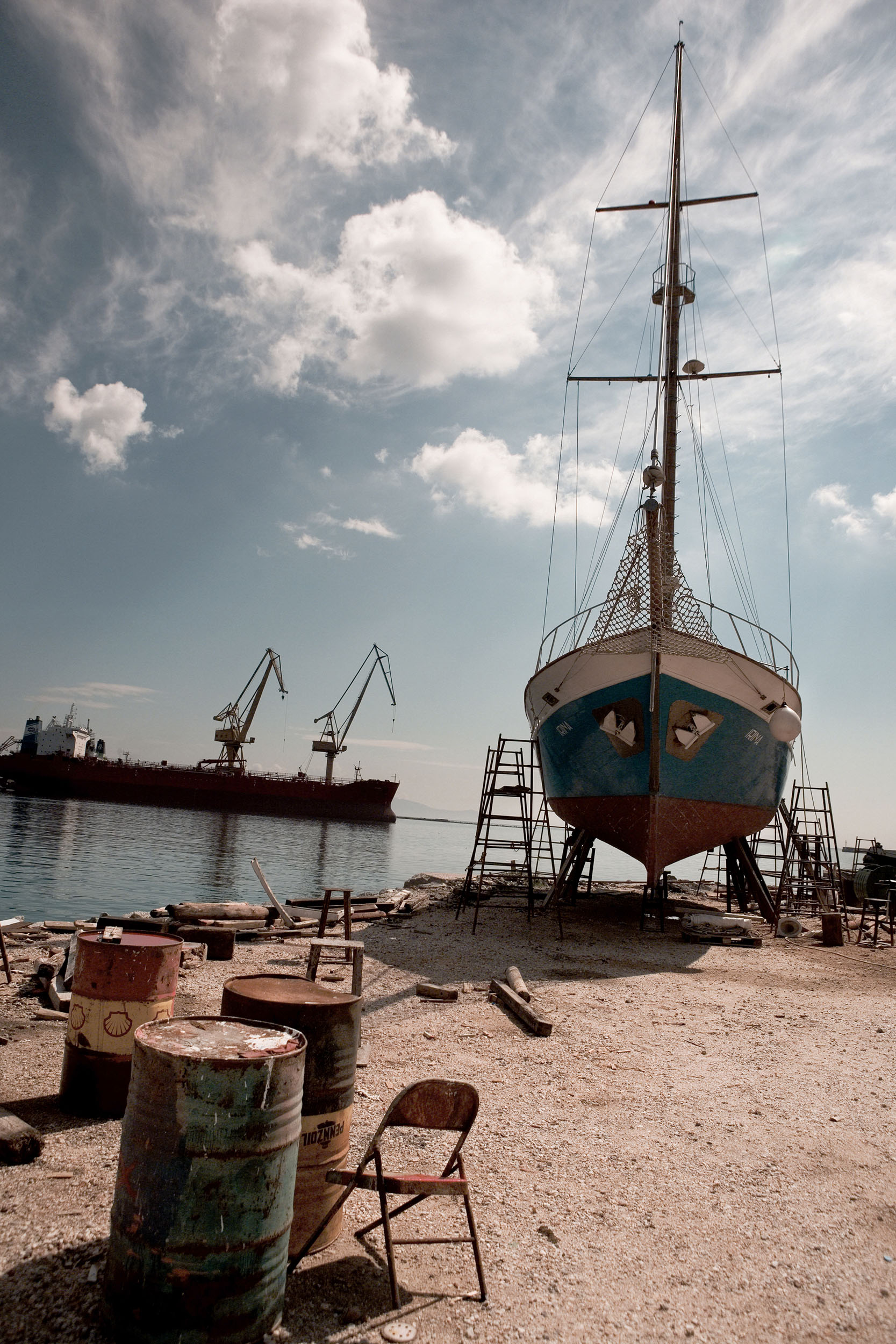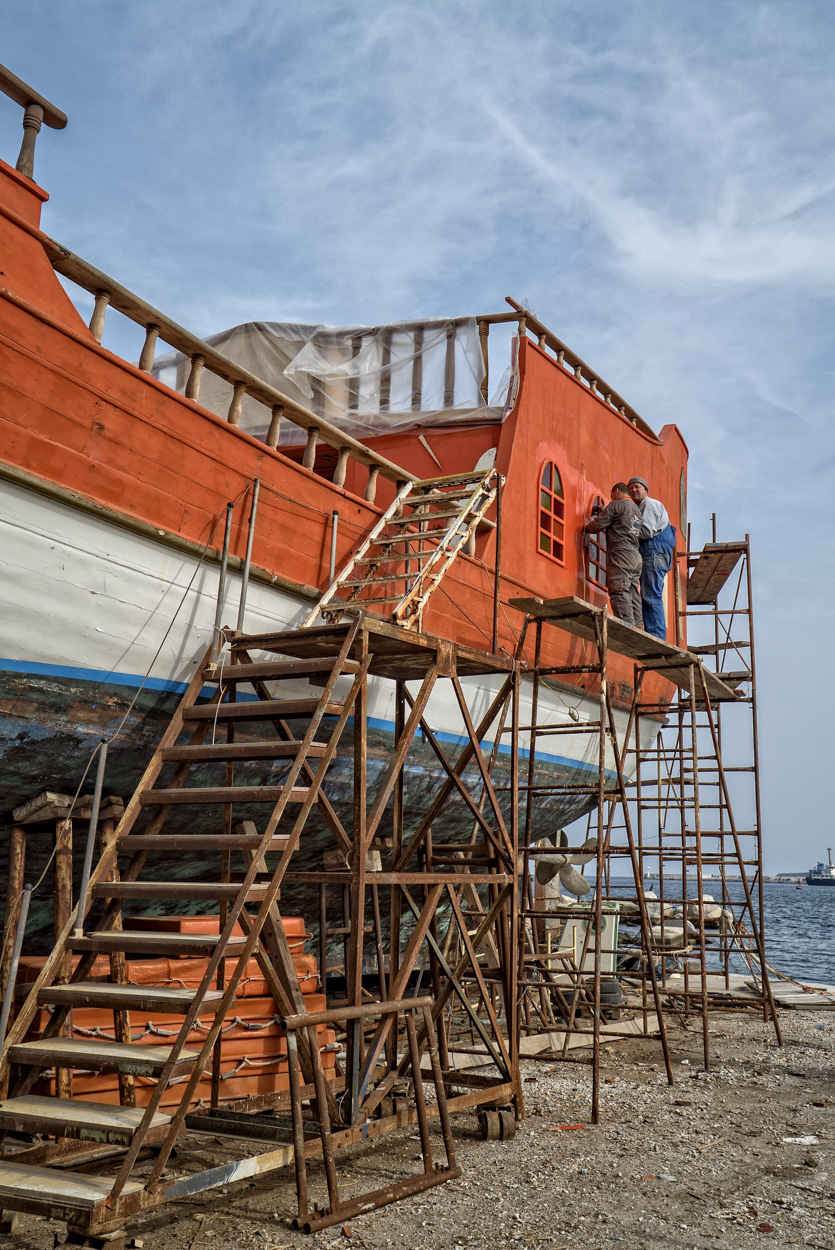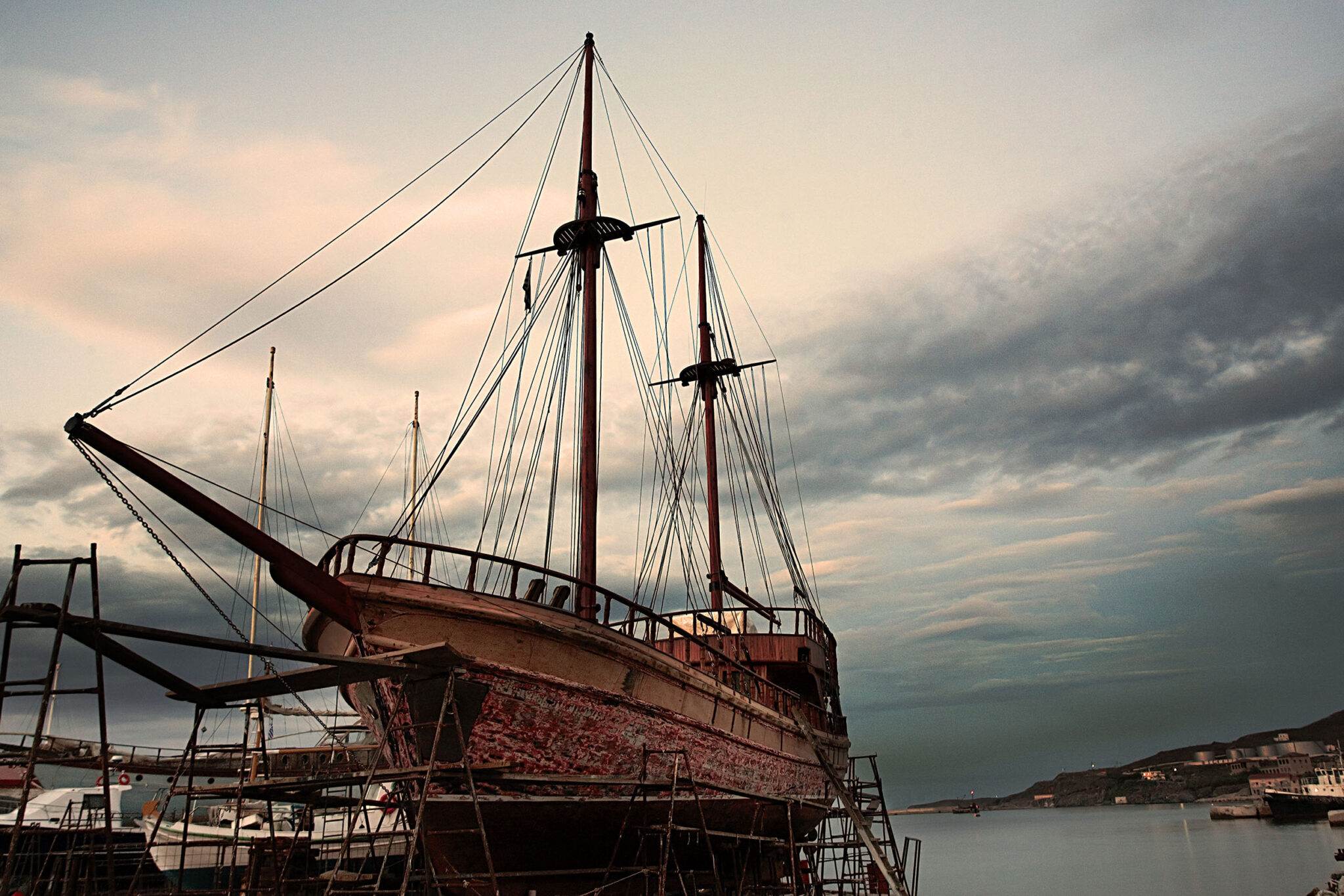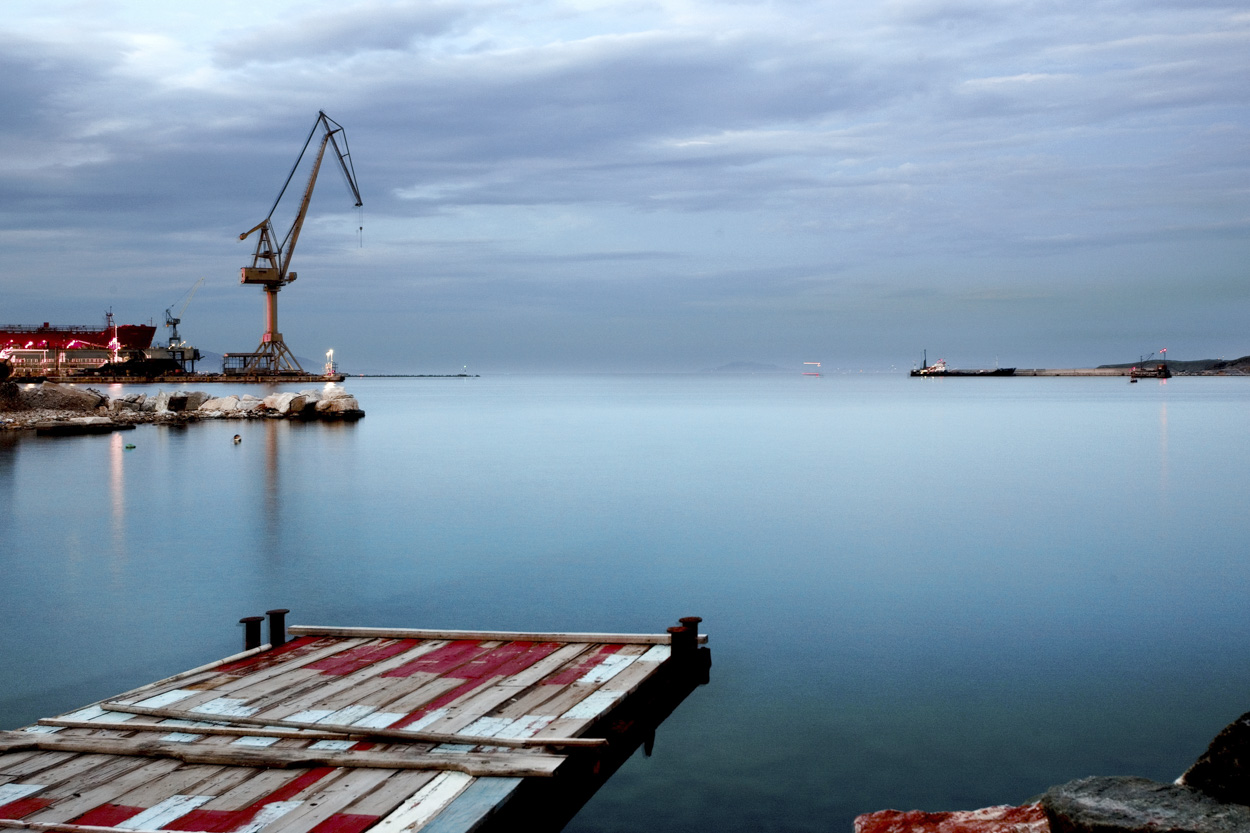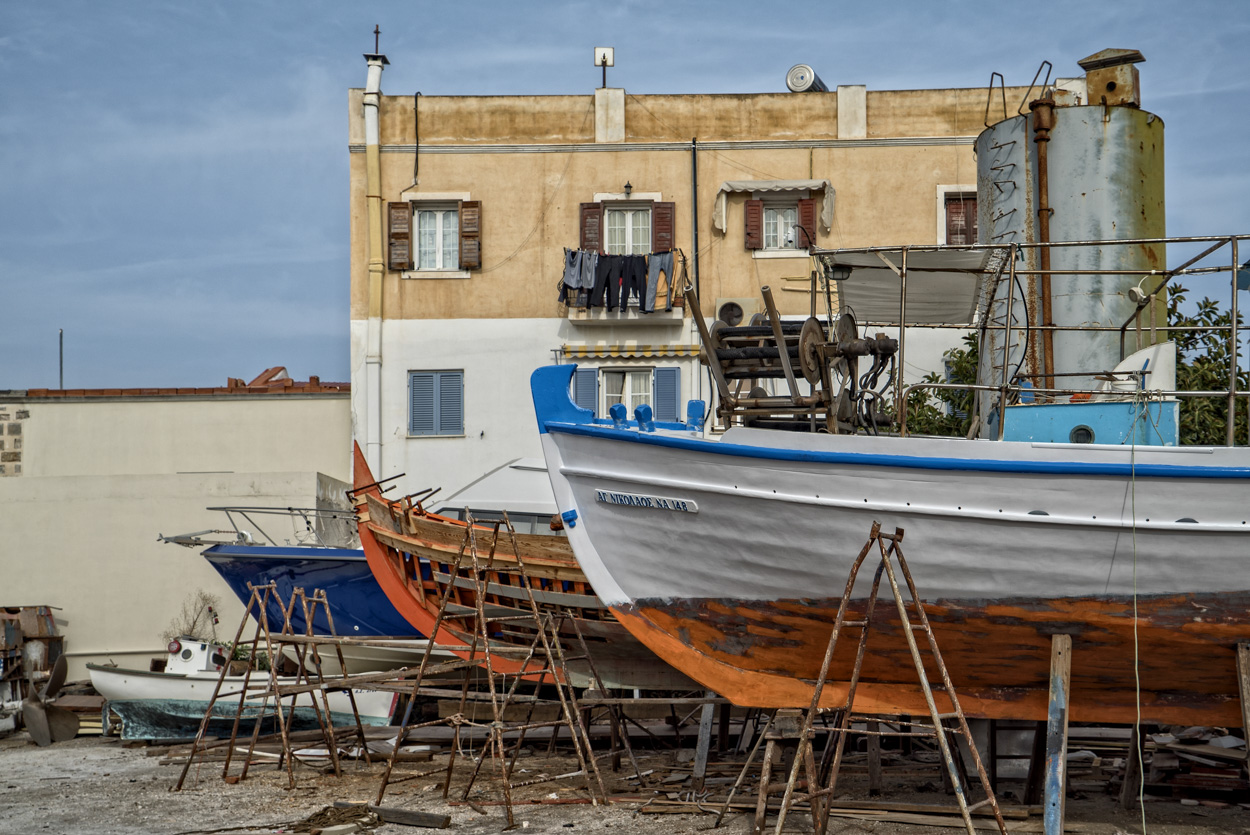Nowadays Greece has three main hubs of economic activity: Athens, Thessaloniki and Patras, which are also the country’s largest cities. However back in the 19th century, The Cycladic island of Syros and Its capital Ermoupolis was a major economic center of not only Greece, but the greater eastern Mediterranean region. It was inhabited by a whole host of migrants and refugees who wove a colourful tapestry into the Island’s life, bringing their crafts, cultures and music to its shores.
At one time Ermoupolis was the country’s second largest city, and was a bustling port at the crossroads of three continents, Europe, Asia and Africa. It’s status as a major Mediterranean city can be attested by the grandiose architecture of the public spaces and civic buildings. The large, marble paved Miaouli Square, the noble, neoclassical Town Hall (constructed by the famous architect Ernst Ziller) and the emblematic Apollon Theatre (inspired by the Scala di Milano and built by architect Pietro Sampo).
Historic place of interest
The term tarsanas, meaning small shipyard, is derived from the Turkish. The synonymous Italian-rooted term karnagio is also used in the Greek language, though minor maritime technicalities do distinguish it from tarsanas. Ermoupoli’s shipyard is unique as it is the oldest of its type still operating in Greece. Specialist techniques are still used at this facility when crafting traditional wooden vessels.
These specialist skills weren’t developed here however. The Syros shipbuilding and design methods, hail from great European shipyards of the 18th century. During this period, Stamatis Koufoudakis, a shipbuilder from Chios, adopted the skills of his trade at an Ottoman naval station, managed, at the time, by leading European ship designers and builders. He then brought this know-how back to his homeland, the Psara islands – Psara and the smaller Antipsara – close to Chios.
The first master shipbuilders to settle on Syros, from Chios and the Psara islands, reached Ermoupoli in 1823. This inflow increased from 1824 onwards as life on the Psara islands was greatly affected during the Greek Revolution. One of Syros’ newly arrived shipbuilders, Nikolaos Pagidas, soon gained a reputation that stretched far beyond Greece. A delightful little fact attesting to Pagida’s reputation is that French author Alexandre Dumas, whose books include “The Three Musketeers”, traveled to Syros in 1859 to personally order a sailing vessel from him.
The Ermoupoli shipyard was established soon after, in 1860, when its founder, Pavlos Mavrikos, relocated his shipyard away from the central port area to an outer district, as did other craftsmen at the time. This outer district was known as Gaidourierika, derived from the term gaidouri, meaning donkey, as locals would tie up their donkeys on the outskirts of town before heading into the market. Mavrikos’ descendants maintained the shipyard over the generations. To this day it is still co-run by a great grandson of Mavrikos, along with the Tzortzis family, a partner in the venture. Over 5,000 vessels have been built at Ermoupolis’ small shipyard over the years including the luxurious yacht ordered by shipping magnate Maris Embiricos as a gift for the actress Grace Kelly, then Princess of Monaco.
The Ermoupoli shipyard was central in the workers struggles of 19th century Greece. Port labourers, along with the island’s tanners, played a leading role in staging the 1879 strike, the first in modern Greek history.
The art of wooden shipbuilding gradually went into decline as steel steamships proved more sturdy and effective, but the final blow that more or less extinguished this traditional craft came with the introduction of synthetic materials like fiberglass following World War II.
These days, the old Ermoupoli shipyard is active in construction, repair, wintering and maintenance of all types of vessels up to 500 tons, both from Greece and abroad, as well as repair and maintenance of their electronic and mechanical systems. Other boat services, such as painting or caulking, are also provided here. The wooden platform where full-scale bended wood designs are worked on, based on techniques developed in the late-18th century, has been preserved.
How to get to the shipyard
Two bus lines from Ermoupoli run to the old shipyard. It is a five-minute walk from the D.O.Y Syrou (tax office) bus stop and just a two-minute walk from the Dimitrios Vikelas Kleisto Gymnastirio (indoor gym) bus stop.
Read also:
Diros: Mani area cave with spectacular stalactites, route covered by boat
Lake Kournas: Cretan freshwater lake with white sandy shores



